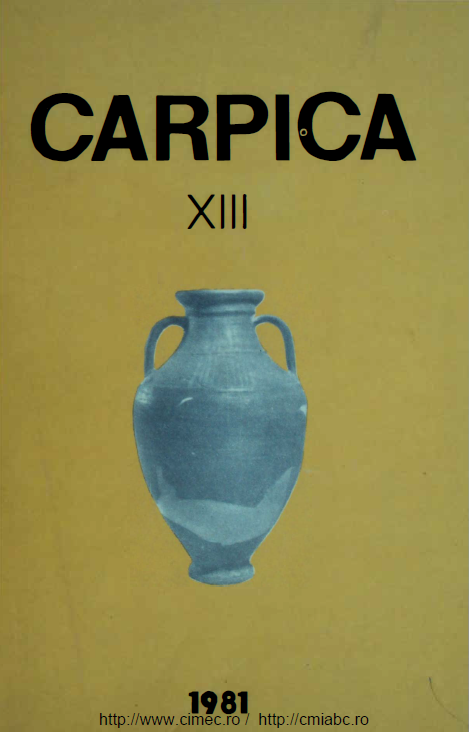
Date privind onomastica feminină în Moldova la începutul secolului al XVIII-lea
Articolul prezintă date privind onomastica feminină în Moldova la începutul secolului al XVIII-lea.
More...We kindly inform you that, as long as the subject affiliation of our 300.000+ articles is in progress, you might get unsufficient or no results on your third level or second level search. In this case, please broaden your search criteria.

Articolul prezintă date privind onomastica feminină în Moldova la începutul secolului al XVIII-lea.
More...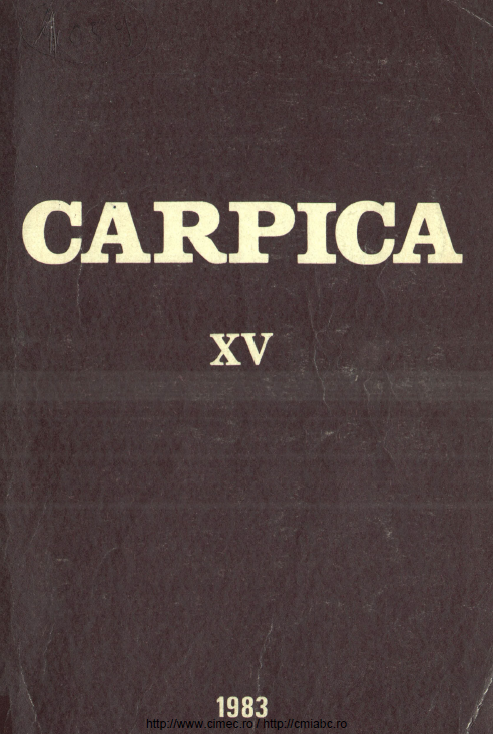
The popular architecture monument from Fichitești - Podu Turcului, Bacău County
More...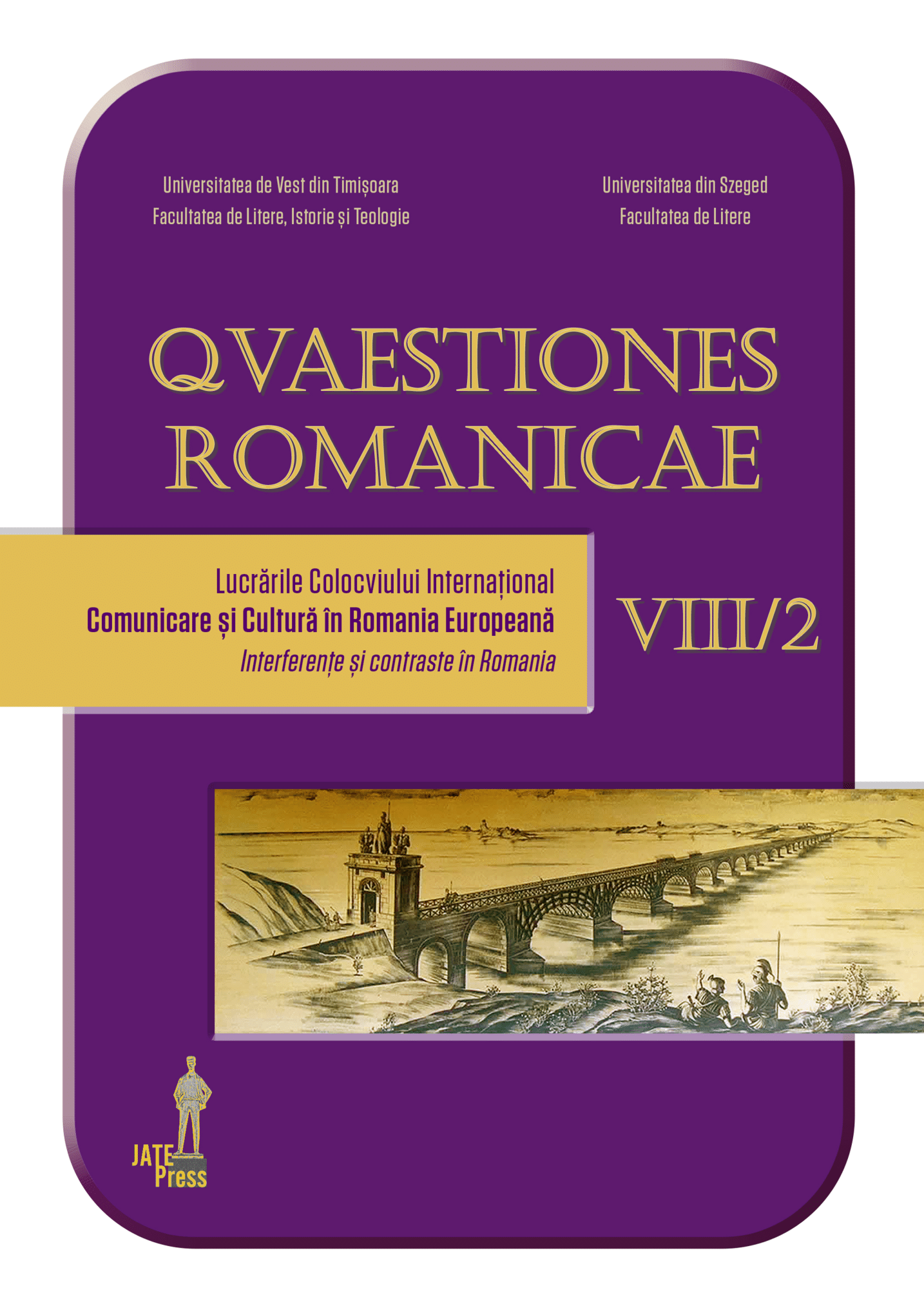
The emperors of the Habsburg Empire were the favorite candidates for the throne of the Holy Roman Empire of the German Nation and were fierce supporters of Catholicism, relying in their expansionist policy often on Italian mercenaries, especially on the military experienced leaders. Perhaps their contribution to the Great Turkish War (1683-1699) was most evident. We will focus on some important names of Italian generals who became involved on the Banat front and whose exceptional military career has gone trough the history: Enea Silvio Piccolomini, Luigi Ferdinando de Marsigli, Frederico Ambrosius Veterani, Aeneas Sylvius de Caprara, Antonio Caraffa, Eugeniu de Savoia-Carignano. They remained at the time, among the Christian military, the only ones who still believed in the return of the European prestige of Catholicism, were against the Protestant Reformation of any color and were convinced of an inner modernization of the Catholic Church. For Banat and Transylvania, their passage at the head of the armies of mercenaries through the area meant the scholarly recording of the first descriptions of these territories, the appearance of the first maps and plans of cities and new lands.
More...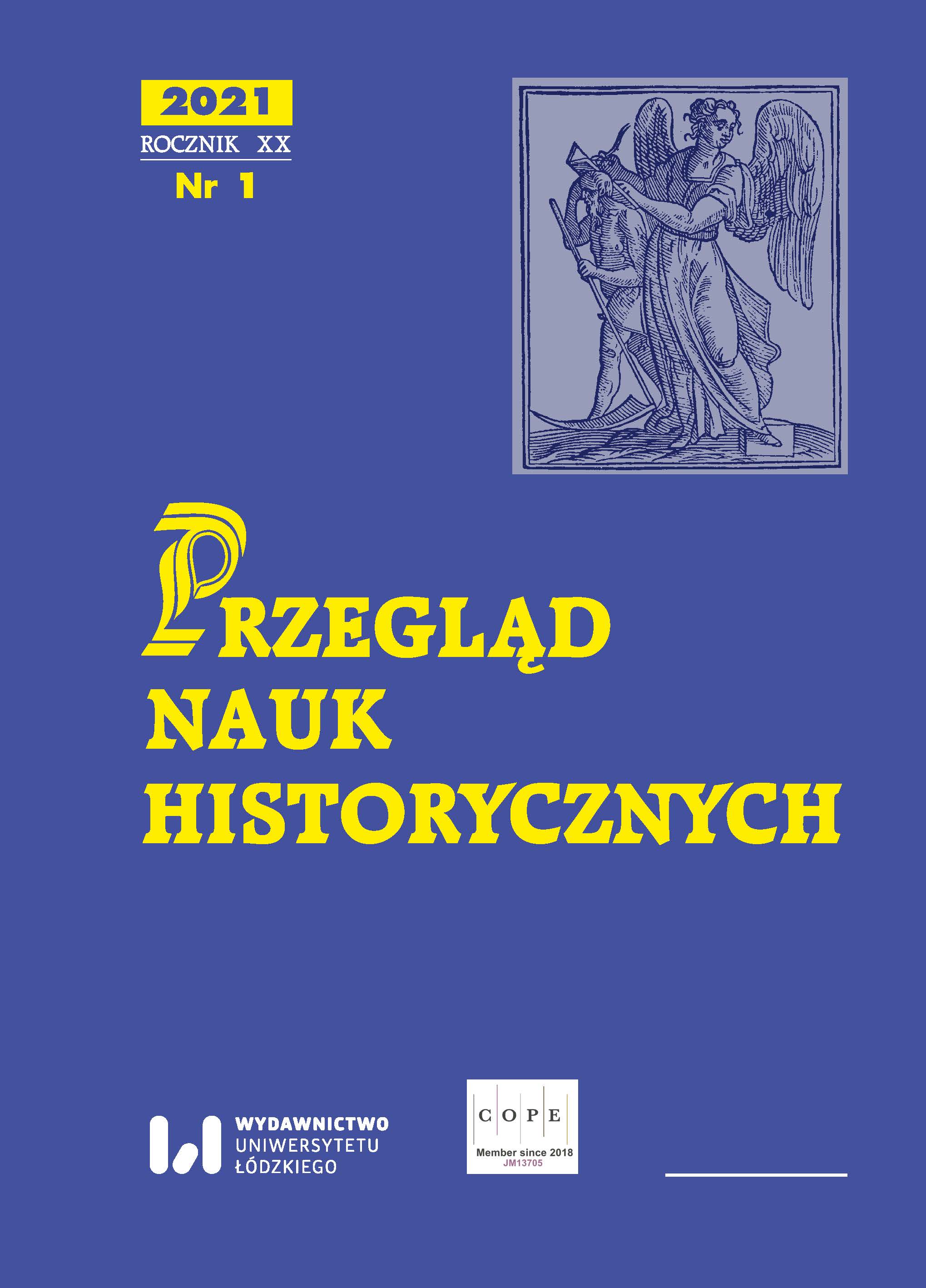
Hereby article constitutes an attempt to present the figure of Jan Karol Chodkiewicz from the Supraśl line (1686–1712), the son of Jerzy Karol Chodkiewicz, the starost of Błudeń and Grand Quartermaster of Lithuania, and Marianna Tekla from the Naruszewicz family. The source base for Chodkiewicz’s biographical outline comprise materials stored in the National Archive in Kraków, at the Młynów Archive of the Chodkiewicz family. The variety of documents contained therein made it possible to reconstruct his biography as accurately as possible. From it emerges the figure of Jan Karol, who, orphaned by his father in childhood, was left to the care of his mother, his successive stepfathers and the guardians assigned to him by law, all of whom had possessive inclinations towards the Chodkiewicz estate. Despite this, he received a thorough education at Jesuit schools in both Vilnius and Warsaw during the period of political and military unrest that gripped the Polish-Lithuanian Commonwealth during the Great Northern War (1700–1721). Due to poor health, he did not actively participate in the political and military sphere of the Polish-Lithuanian state, yet focused all his energy on ensuring the integrity and development of his homeland, for which he had to fight, also in court, and not only with his neighbours, but also with his own relatives as well. Chodkiewicz also managed to ensure the continuity of the Supraśl line, alas his first-born Adam Tadeusz, just like himself, was brought up fatherless from early childhood.
More...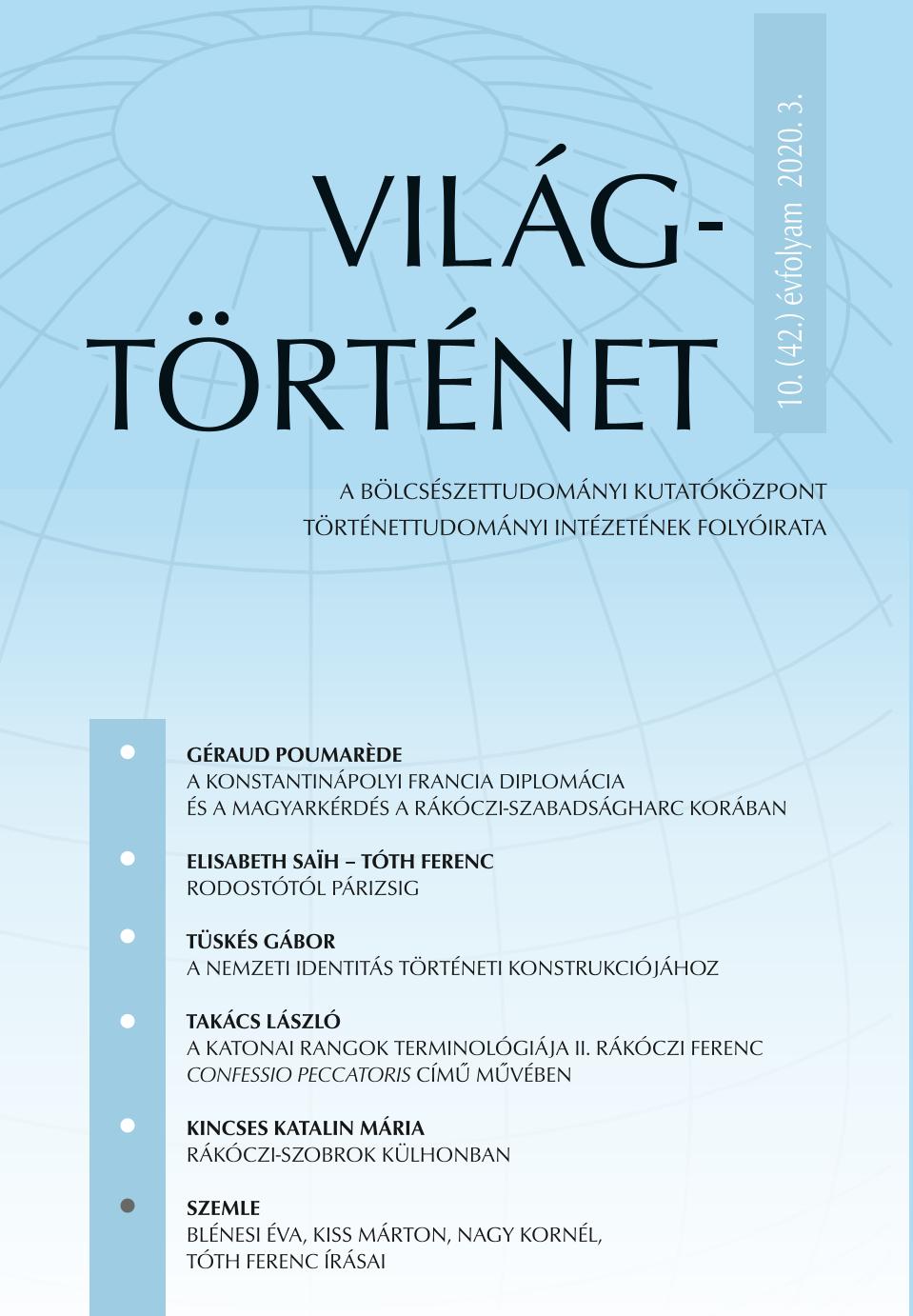
This study is an analysis of the diplomatic activity of the Marquis de Ferriol, French ambassador to Constantinople during the period of the Hungarian War of Independence. Knowing the Hungarians well since his missions to Emeric Thököly, Ferriol tried to engage the Ottoman Porte in an active policy in favour of Rákóczi. These attempts were unsuccessful because of Ottoman inertia, but the way of Constantinople remained a very important link between the Hungarians and the French government which gave them assistance. On the other hand, the Hungarian diversion was very useful for France during the War of the Spanish Succession.
More...
The article focuses on the secret mission of Jacques de Boissimène, envoy of Philip V of Spain to Francis II Rákóczi, prince of Transylvania. The goal of Boissimène’s mission (acting unimpeded by the duty of crusade which had been decreed in 1716) was to influence Sultan Ahmed III and ensure the continuation of the Austro–Turkish war which kept the Emperor Charles VI’s military forces occupied in his dominions’ eastern border, whilst the king of Spain deployed a military attack on the kingdom of Sardinia – also a dominion of the Emperor. But the envoy was not only a diplomat of Philip V: at the same time, he was also an informer of the French Regent, the Duke of Orléans. The overlapping of these functions leads us to assess and analyze the intertwining interests of the two Bourbon monarchies, the French and the Spanish one, while they both take part in a conflict – the War of The Quadruple Alliance – where they are on opposite sides.
More...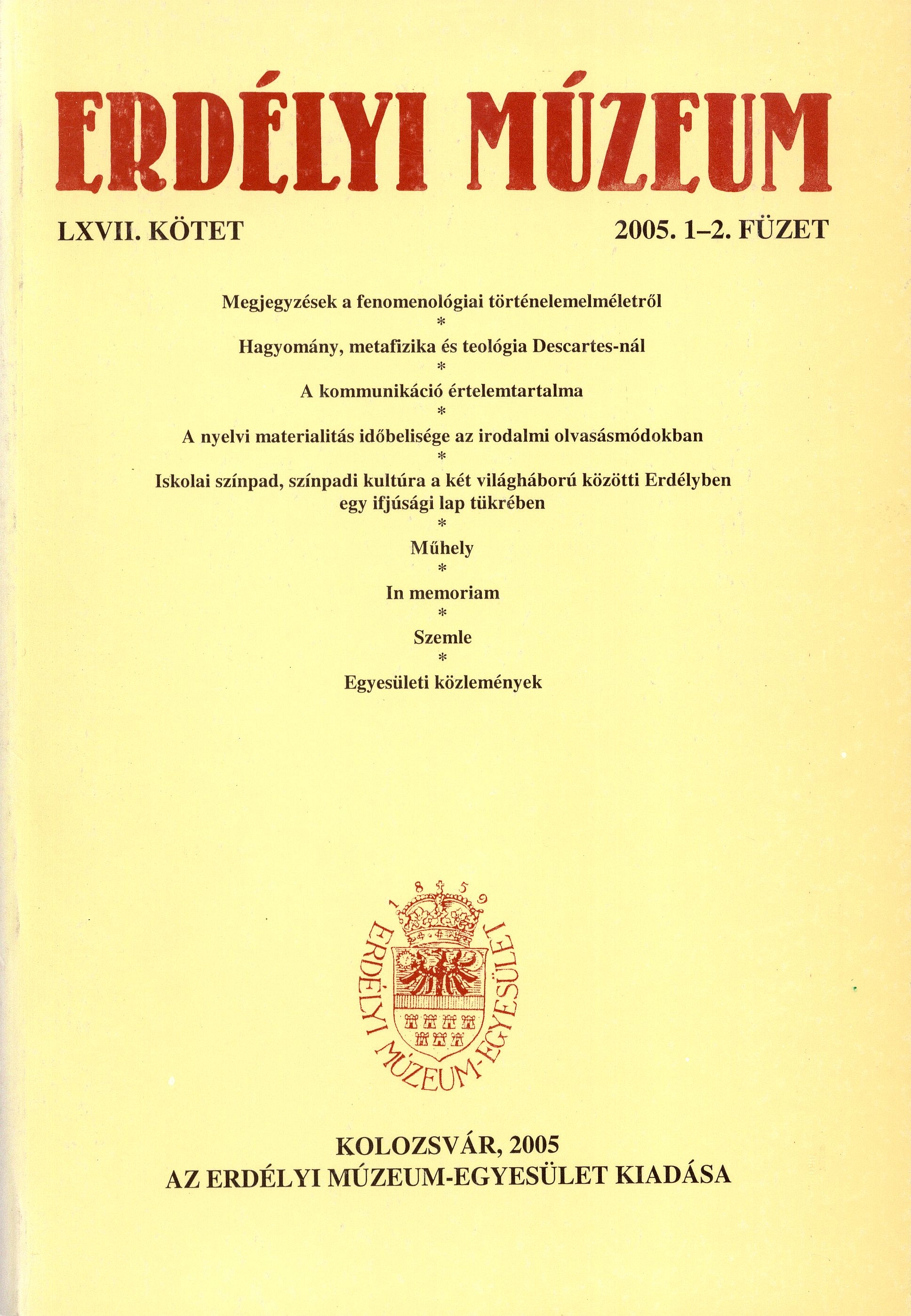
The study deals with a scientific work from the 18. century.
More...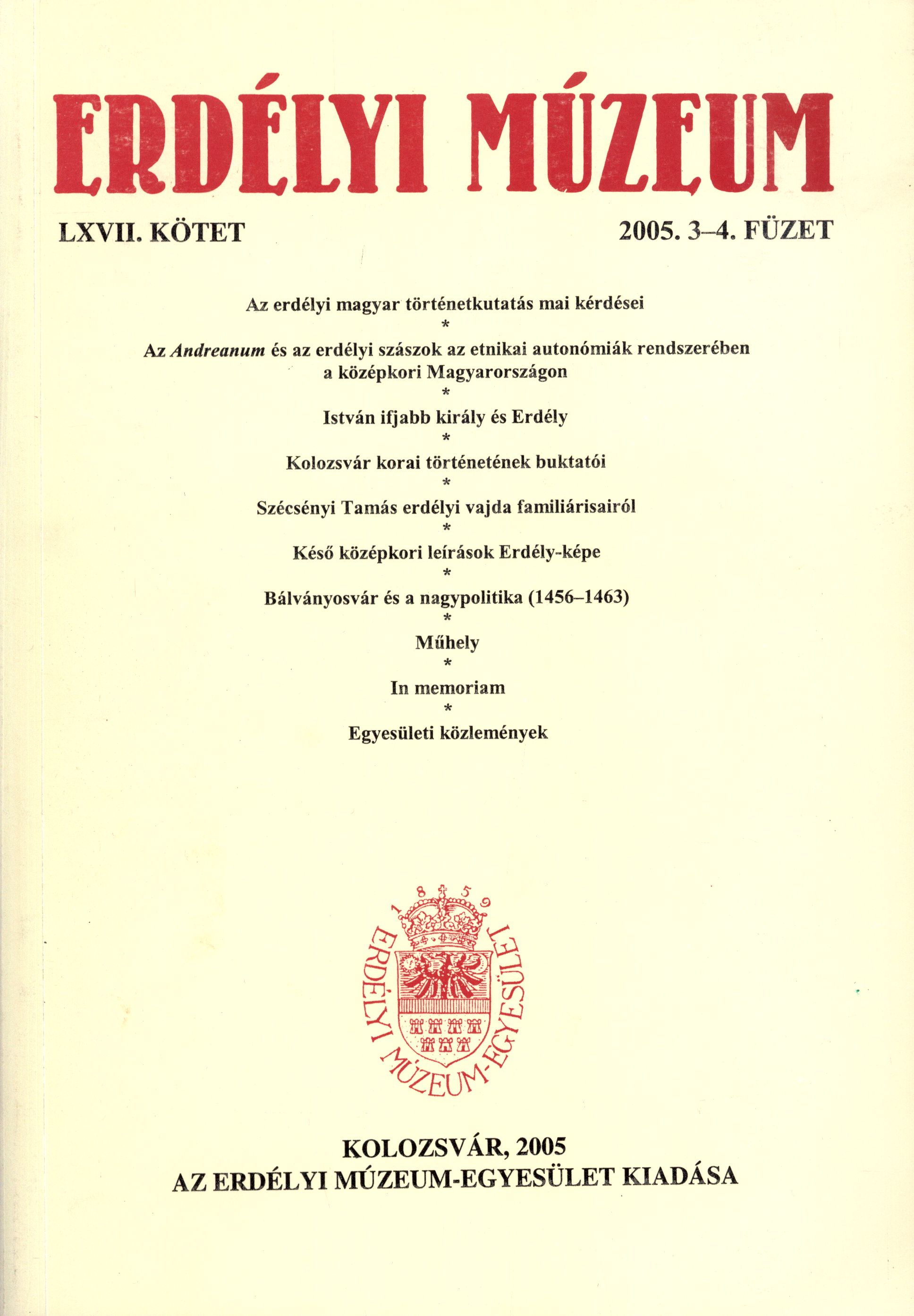
At the beginning of the 18th century a movement started to emerge in order to re-establish the former Dominican contrata of Transylvania and its friaries. The friars and their supporters joined their forces for this common purpose, but they fault to achieve that. In the second decade of the 18th century the active leader of this re-establishing movement was a Dominican friar, Martin Bartók. At the beginning of the summer of 1718 Bartók visited the former Dominican friaries and their churches from Transylvania, and wrote an exhaustive report to the master general of the order about the remarks made during his journey. At the same time, he composes a shorter report addressed to the Hungarian Provincial, Dominic Twinger. Both of the Latin reports are almost the same concerning their contents. Bartók’s remarks are quite precisely if we compare them with other sources regarding these friaries. Nowadays, both of the reports are to be found in Archivio Generale Ordinis Praedicatorum in Rome. During the journey, Bartók had a clear purpose: to make a chart of the old Dominican friaries and churches in order to regain them by the proper owners. He visited five of the altogether nine late medieval friaries of Transylvania: Kolozsvár, Brassó, Beszterce, Gyulafehérvár, and Szeben. In the present paper I set up three topics that concerns Bartók’s reports. The first one is dealing with the relationship between the late medieval and the 18th century condition of the friaries. The second topic is referring to the changes in the status of the buildings that occurred during the period between mid-16th century and the beginning of the 18th century. The final one is dealing with Bartók’s proposals and plans concerning the future of the Dominican Order in Transylvania. Some parts of the reports were already published by Béla Iványi. Being an important primary written source about the Dominicans who at the beginning of the 18th century tried to gain ground in Transylvania, Bartók’s reports were never analyzed from this point of view. Beside this, the reports set a new light on the recatholization process in Transylvania demonstrating the presence of a new competitor alongside the Jesuits and Franciscans in this phenomenon.
More...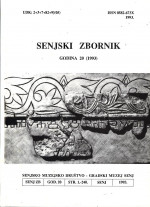
In diesem Artikel wird die Problematik des Buches von einem Senjer, Ilija Lučkinić, beleuchtet. Das Buch trägt den Titel: „Način pomoći k zveličnju umirajuće" (Die Art der Hilfe zum Lob der Sterbenden). Das Buch wurde in Venedig gedruckt. Es stellt eine Kompilation verschiedener Lekture iiber den Zutritt zum Sterbenden dar, und einige Teile des Buches hat Ilija Lučkinić selbst geschrieben (Widmung und Vorwort). Die wesentliche Kennzeichnug dieses Buches ist die Religiosität, aber das Buch ist mit einem durch wahre Frommheit anregenden Stil geschrieben. Deswegen konnen wii in ihm auch die Elemente der Kunstliteratur finden. In diesem Artikel wird die psyhologische Seite des Buches besonders betont, der Autor seht sich vor die Aufgabe gestellt, dem Sterbenden mit viel Verständnis heranzutret-ten, und ist in diesem Zutritt wohl gewandt.
More...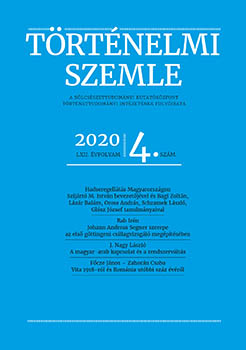
The compromise peace between the Hungarian estates and the Habsburg court that closed the Rákóczi revolt in 1711 set the framework for the provisioning of the imperial army which was stationed in Hungary. While the military leadership had to take into consideration the country’s interests, the estates had to acquiesce in the permanent presence of a foreign military on Hungarian soil, the provision of which, however, no more constituted an intolerable burden for a country in the process of regeneration after the end of Ottoman occupation. The supply of the army was predominantly made in kind (food and fodder) instead of in cash, in full accordance with the local conditions. Presenting the institutional framework and the regulations, the study shows that both the Hungarian political elite and the Viennese central administration made considerable efforts at regulating the coexistence of army and society, and at limiting the abuses of the military. As the reforms of Joseph II to re-regulate army provision by transforming the duties into a permanent tax proved ephemeral, the regulation of 1751 remained effective until as late as 1848.
More...
The study seeks to answer two questions: first, what role did the supply of the troops of the imperial army stationed in Hungary play in the grain trade; secondly, how significant was the grain trade concerning the provision of army in the eighteenth and the first half of the nineteenth century. As there were not enough barracks, most of the soldiers were quartered with peasants, who also had to provide catering below the market price. Consequently, markets did not play a major role in supplying the military. Even the consumption of the 60 000-70 000 soldiers was of no great importance, as it made up only 1-2% of the grain production. Nevertheless, the demand of the army facilitated the sale of grain in areas where the peasants could not sell their crops. During the Napoleonic Wars, in the late eighteenth and early nineteenth centuries, the importance of military demand temporarily increased. The financed war-needs caused an economic revovery, which however end up in a recession at the end of the war. After that military consumption no longer played a part in the development of the following decades.
More...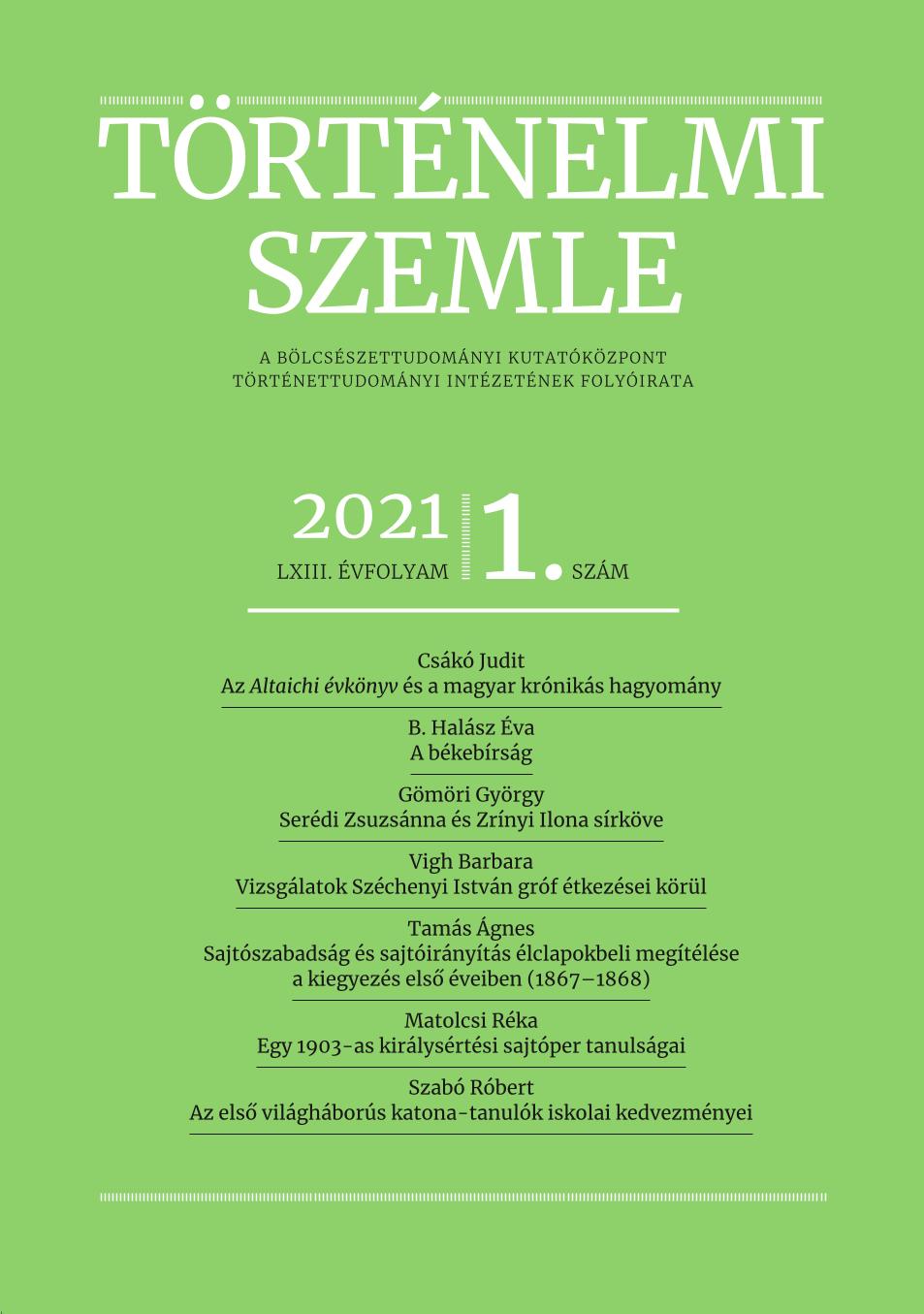
The paper corrects two false pieces of information, both of which can be found on old tombstones. One of them is the tombstone of Mrs. Ostrogorski, Zsuzsánna Serédi (d. 1596) at Tarnów, the other belongs to Ilona Zrínyi, who died in 1703. The father of Zsuzsánna Serédi was not György but Gáspár (II.) Serédi, and her guardian was András Balassi. Ilona Zrínyi died as the wife of Imre Thököly, who was eight years younger than her, in Turkish exile, and a false date was written on her tombstone, first kept by the Jesuits of Galata, and later transferred to Kassa [Košice], which made her appear several years older. The paper’s conclusion regarding Zrínyi builds to a great extent upon the evidence recently revealed by Hungarian historians.
More...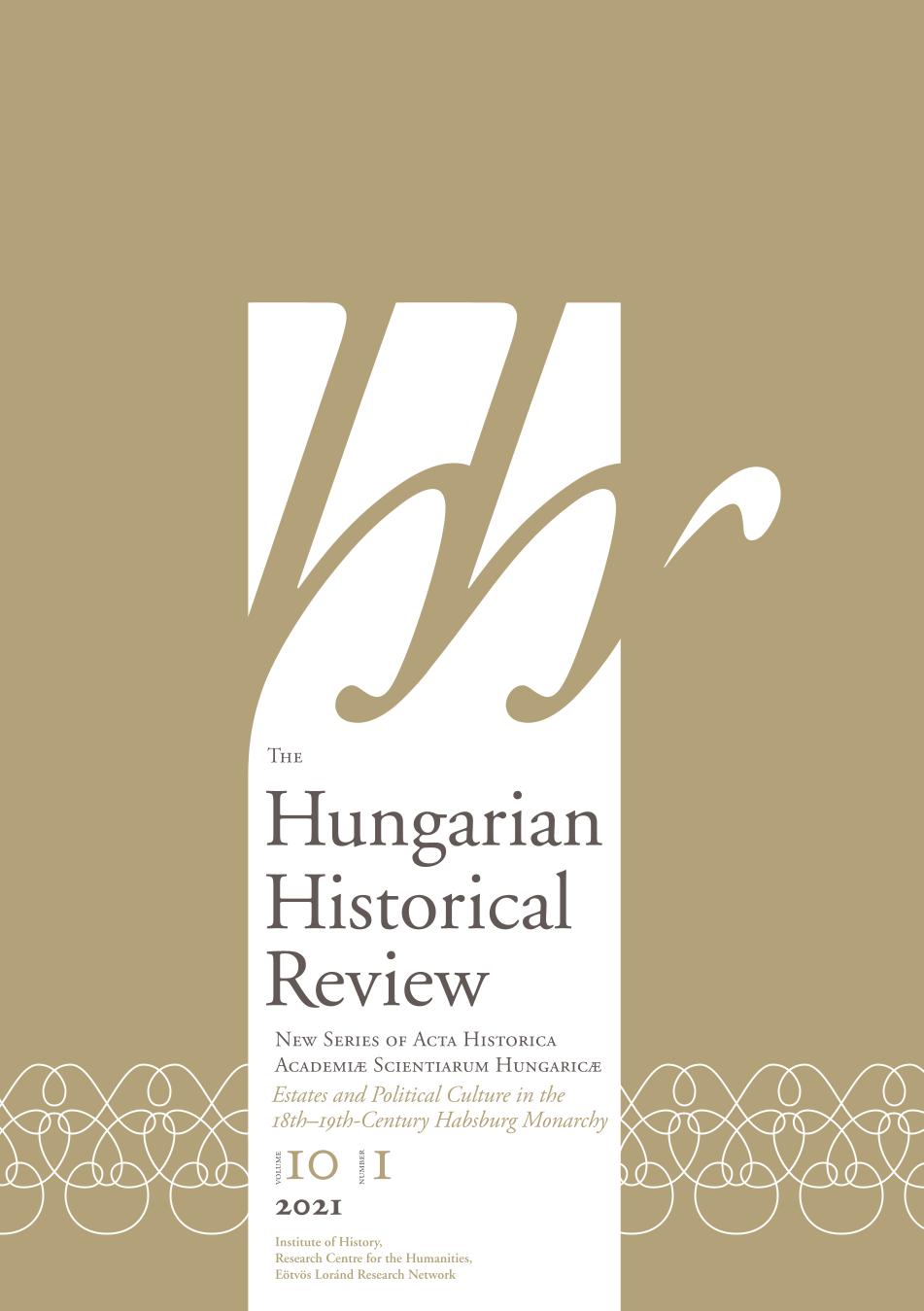
The Kingdom of Hungary had a strong system of estates within the Habsburg Monarchy, and this exerted a significant influence on the positions of free royal cities. The free royal cities enjoyed a large degree of internal autonomy until roughly the end of the seventeenth century, with little oversight or interference by the larger state. Since 1526, the cities had been members of the estates which had taken part in the Diets (the parliaments which could be regarded as the early modern form of the Hungarian), though they had played a minor role in comparison to the counties. In the last third of the seventeenth century, the system of estates underwent significant changes. The royal state came to exert more control, and in the free royal cities, the central administration began to play a stronger role as a force for oversight. The interests of the state administration now played an important role in the selection of the city’s leaders. The delegates who represented the cities in the Diets were also chosen according to these considerations. The local bodies of state administration were given major say in the selection of the representatives. As a consequence of this, delegates began to be chosen who were from different social backgrounds, including people who had different places within the system of the estates. While earlier, the individuals who had been sent to take part in the Diets had been members of the Lutheran bourgeois elite, from roughly the late seventeenth century onwards, members of the nobility living in the cities began to play an increasingly influential role. Many of the delegates from the city of Kassa (today Košice, Slovakia) who will be discussed in the analysis below came from families of non-noble origins which, however, had been granted nobility as a reward for the services they had performed in the chamber administration. The career paths for members of these families led either to administrative bodies in the city or back into state administration.
More...
The paper focus on the inauguration ceremonies of Charles VI in the Austrian lands. The time span of these inaugurations from 1711 to 1732 and the fact that Charles received the tribute in person is of interest to describe the relationship between the ruler and the estates and the significance of these ceremonies as a whole. The paper will focus especially on the formal oath taking, the confirmation of privileges by the sovereign and where and when these ceremonies took place. For example, were the privileges confirmed in advance of the inauguration ceremony? Were oaths or other forms of affirming the good will of the sovereign like traditional ceremonies (Carinthia) required by the estates? Were there any differences? Who was involved and why were these expansive journeys and ceremonies staged almost two decades after assuming power?
More...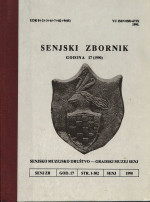
In questo suo lavoro l'autore esamina il contributo del pfo »Hrvat« nello sviluppo della navigazione costiera sulle sponde orientali dell'Adriatico. II principio avvene verso 1872 quando la direzione della Societa navale di Segna ciede la commissione alio »Stabilimento tecnico« di Fiume di costruire un piroscafi per trasporto di passeggeri e di merci. L'autore sottolinea che il pfo »Hrvat« fü cosi il pioniere della navigazione costiera dell'Adriatico orientale. L'Autore prende l'esame i trent'anni di navigazione del pfo »Hrvat« tra Segna cioe Fiume con i porti del Canalle della Morlacca, le prime congiunzioni tra Segna e Pag, Segna e Zara. In queste navigazioni ultimamente collegava Fiume con Novi, cioe Fiume con i porti occidentali dell'isola di Veglia.
More...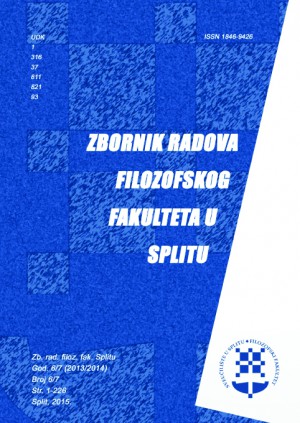
During the Early Modern Period, mainly in the time of the Veneto-Ottoman wars in the seventeenth and the eighteenth century, the backbone of Venetian Trans-Adriatic armed forces were units called Fanti oltramarini and Croatia cavallo, whose soldiers were recruited primarily from the Venetian acquisitions stretching from Istria to Albania and Greece. In this article, the central topic of research relates to the part the denizens of Split played in the aforementioned military units during the eighteenth century. The article is based on the analysis of sources kept in the Archivio di Stato di Venezia (archival series: Inquisitori sopra l’amministrazione dei pubblici ruoli), containing full lists of military complements of regiments and companies. Based on the extant data, personal data of the soldiers and their physical characteristics (age, stature, colour of hair) are analysed. Analysis of the documents shows that in quantitative sense the denizens of Split made one of the most numerous groups of Croatians within Venetian infantry and cavalry. The analysis also shows that the soldiers from Split served in the units mostly commanded by prominent military commanders, who were by their origin also coming from Dalmatia and Boka, and it is evident that those units (regiments and companies) were extremely mobile and collocated all around Venetian Italian and overseas acquisitions. In the end of the article, it is concluded that problematics of the part played by the Croats in Venetian military units, in this particular case of the denizens of Split, due to the rich sources at our disposal, still leaves enough space for future research and scholarly discussion. As an appendix to the article is given full list of hitherto discovered soldiers from Split in the infantry overseas units of the armed forces of Venetian Republic.
More...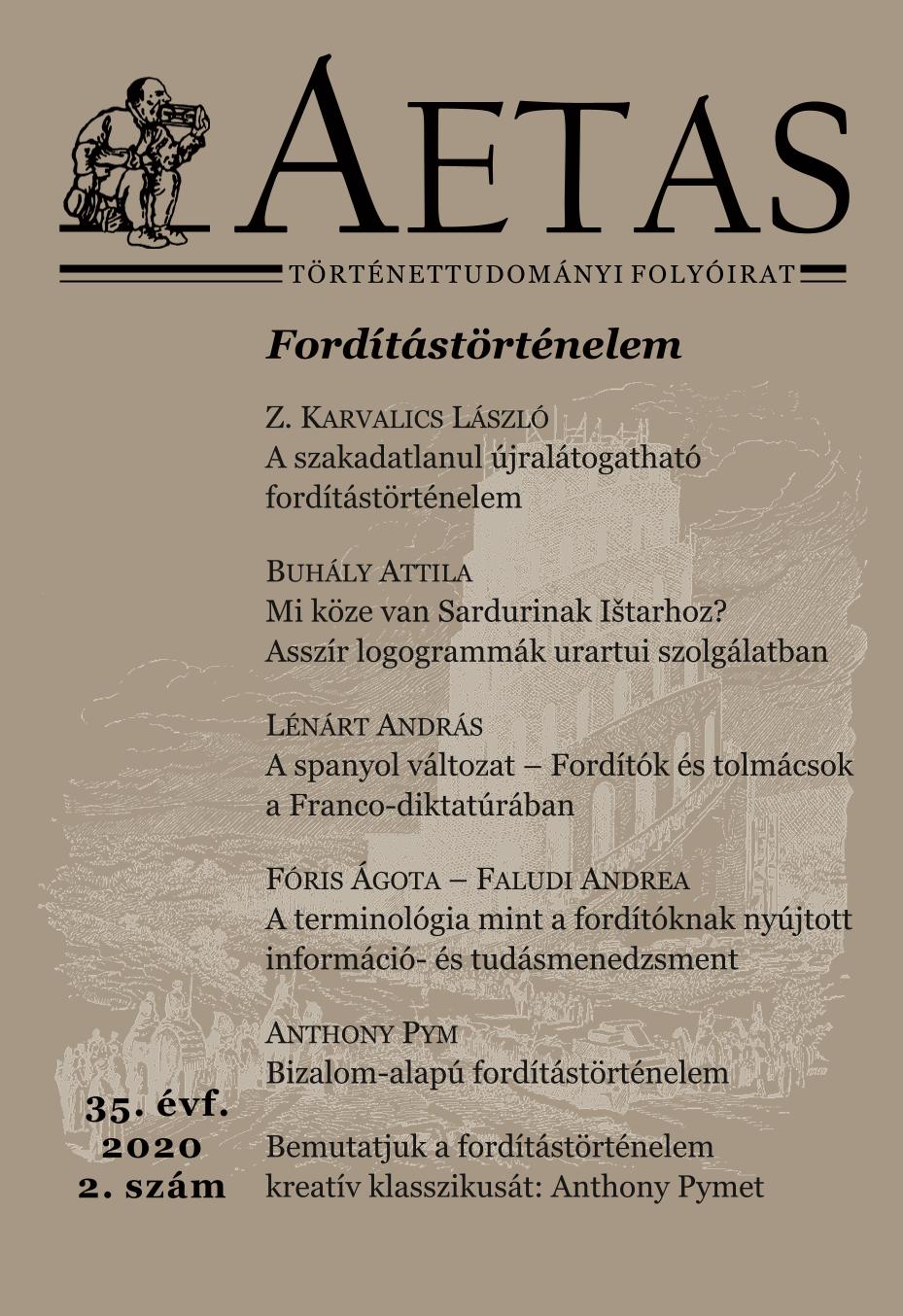
This paper examines the origins of Hungarian nationalism in the Kingdom of Hungary. Its main thesis is that nationalism (as a political discourse and not as a mass movement) emerged in Hungary more suddenly, more radically and earlier than previously thought. We argue that the power of nationalism in shaping culture, society, politics and identity may best be understood through an analysis of the conceptual arsenal, the rhetorical strategies and dynamics of the new discourse of nation and nationhood, which suddenly emerged in the early 1790s. We claim that it is the sudden appeal of these political discourses that needs to be explained first: how could they successfully overwrite earlier discourses? How did they gain social, political, and cultural legitimacy? How did they relate to the Enlightenment? To provide answers to these questions, we first point out the ambiguity and fluidity of new concepts, such as nation, language, fatherland, patriot, foreigner etc. These new, key concepts in political discourse provided innovative and independent sources of political legitimation. They served as keystones, on the basis of which the framework of politics could be rewritten. They made an easy entry into politics also because they were rooted in more familiar, earlier political discourses. However, for the success of nationalism as a political paradigm (which remained relatively unchanged in the coming century), the new discourses of nation also needed to make attractive ideological propositions and project positive visions of the future. The main body of the paper shows how these propositions, all aiming fundamentally at public happiness, targeted at a variety of audiences.
More...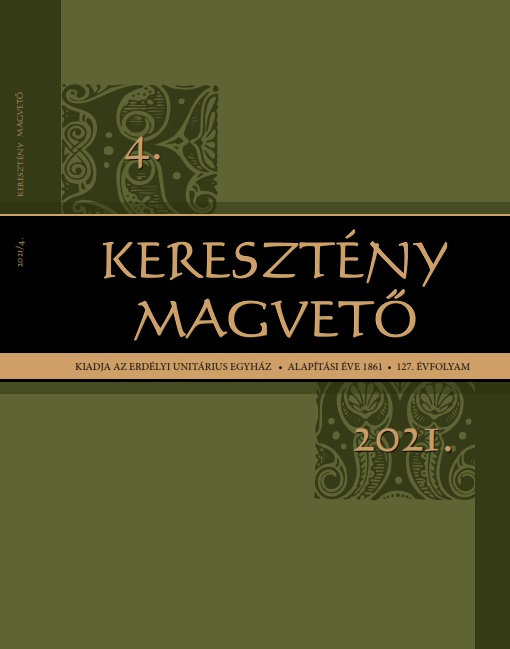
The Gyergyai family was one of Kolozsvár’s (Cluj-Napoca) most important Unitarian families in the 18th–20th centuries. They originated from Seklers’ Land, from Bözöd (Bezid), Kibéd (Chibed) and Kissolymos (Șoimoșu Mic). Mihály Gyergyai (16??–?) was granted the rank of “lófő” nobility in 1655 from Prince György Rákóczi II for participating in a war. His grandson, Pál Gyergyai (1689–1751), came to study at Kolozsvár’s Unitarian College. There he was elected senior of the school. He twice married wealthy widows and became an important citizen of the town. With his first marriage he obtained the famous Gyergyai House in the Central Square of Kolozsvár which the family owned until 1875. He was elected to many positions including as the town’s senator. He was also Kolozsvár’s deputy to nine sessions of the Transylvanian Diet. Gyergyai represented the interests of the Unitarians in the Town Council and in the Diet. He served as curator of the Kolozsvár Unitarian Congregation and was one of its councilors in very difficult political periods. The Gyergyai name is preserved in a 1734 Latin description of Kolozsvár (Cluj-Napoca, Claudiopolis). He and three other members of the Town Council described all the important buildings and copied their inscriptions, the legislation of the town, and the responsibilities of the town-council. They also compiled a history of town’s churches and schools, as well as its population and possessions. This was twice translated into Hungarian (1865, 1944), and is considered one of the most important sources of the history of Kolozsvár.
More...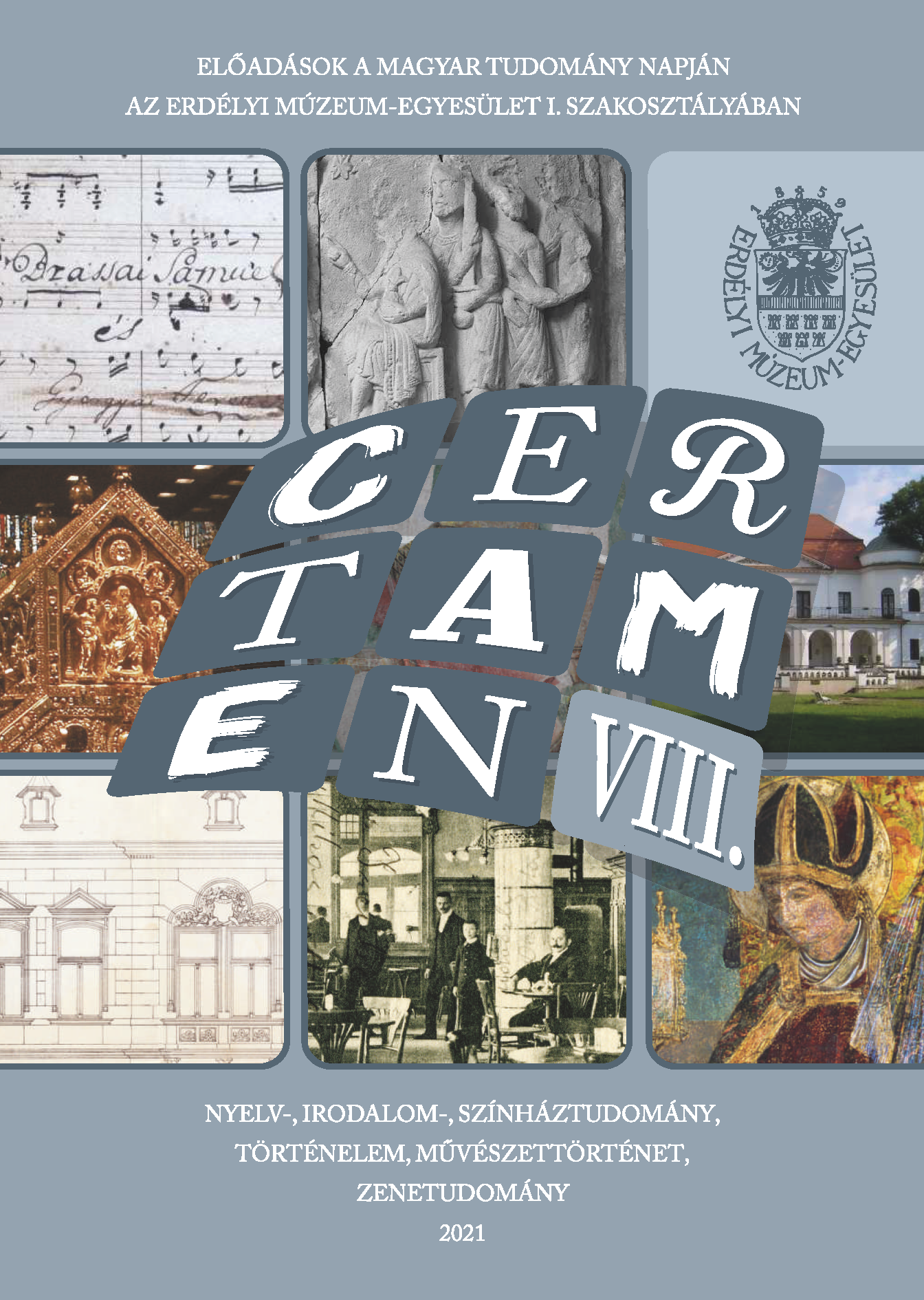
The Family of the Sztáray Counts of Nagymihály (Michalovce) and the Rise of the Sztáray Demesne in the 18th centuryaristocracy; 18th century; Sztáray family; the demesne of Nagymihály; demesne organizationThe study discusses the formation and evolution of the Sztáray family from Upper Hungary and its branches from the 14th to the end of the 17th centuries. The Pongrácz, Eödönffy and Sztáray families were all branches of the same Nagymihályi family. Initially, the members of the Pongrácz family owned the most important lands, that is Nagymihály and dozens of settlements in Ung and Zemplén counties. The most significant changes on the territory of the domain of Nagymihály occurred after 1711. During Rákóczi’s war of independence both the citizens of Nagymihály market town and the nobility stood alongside the prince, supporting him in his battles. Following the war, however, certain members of the nobility – like László Pongrácz, or the members of the Szirmay family – didn’t manage to reinforce their former social positions. As a consequence, during the 1720s and 1730s Imre Sztáray not only managed to take most of the lands of the domain out of the hands of the former owners, the Pongrácz family, but slowly and steadily superseded even the Szirmays from their pledged lands. Imre Sztáray, who in 1743 became a baron, then in 1749 a count, took the pledged lands in his possession, thus, by the 1750s the Sztáray family became the sole proprietor of the domain of Nagymihály. The son of Imre Sztáray, Mihály jr. continued the expansion of the domain during the second half of the 18th century. The count developed and modernized the estate, its agricultural equipment, and rebuilt, expanded, and embellished the mansion of Nagymihály, which became a representative baroque noble residence with spacious gardens, parks and summer suites.
More...
The study examines the economic and management pursuits of the landowners of the two – Upper Hungarian and Transylvanian – branches of the Csáky family, and their connections with their functionaries. In the middle of the 18th century the members of the Upper Hungarian branch of the family attempted to reclaim their pledged lands from Bihor county from the Transylvanian branch of the family. During this procedure a full-fledged trustee, named Gábor Ferdényi was employed, partly because he was well known for his positions in the county of Bihor, and partly because the Csákys even helped the Ferdényi family to obtain the noble title. After 1785 they regained the three demesnes, and a plenipotentiary was chosen from the same family, namely János Ferdényi, who served the family with full devotion. László Csáky, the Great Provost of Várad, who obtained the manor surrounding Várad (Oradea) after 1800, also chose loyal people, and likewise, he constantly and directly supervised his officers. György Csáky, who belonged to the Upper Hungarian branch, governed the Belatinc manor in Zala county through his commissioner Imre Niczky, who developed a relationship of trust and confidence with the Count, who performed military duties and lived in Sopron. Their thorough correspondence that covers all the details, reveals that Niczky not only carried out the necessary inspections on the land that included 21 settlements, but also did everything he could to make the production profitable. A sign of their close and good relations was, for example, that the commissioner also took care of Csáky’s accommodation in Bratislava during the Diet of 1741. Kata Csáky, who belonged to the Transylvanian female-branch, stands out from the family primarily by organizing the management of the part of the demesne she inherited, by enlarging the land, and by making changes in order to make it profitable. She constantly corresponded with her functionaries, strictly controlled, improved, and corrected their activities, while she herself had also something to learn about farming. Both her difficult nature and Catholicism may have been the reason why she changed her functionaries frequently – who were usually Protestants –, and she couldn’t, or she might not even wanted to build a relationship of trust with them. Based on family documents and voluminous correspondence, the study also draws attention to the importance of good relations that aristocrats established with the officials of their demesnes.
More...